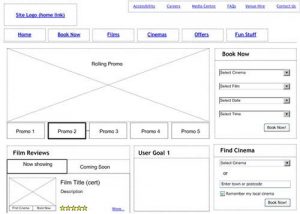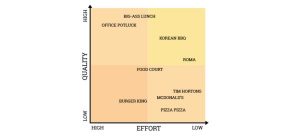
Google Webmaster Tools (GWT) is like a toolbox that can help you to make the most out of your website. Setting it up is easy. All you need is to sign in to GWT and verify your site (the various methods are explained here and require minimal technical knowledge). Once you have set up your account, you’ll be able to access the dashboard.
The Google Webmaster Tools Dashboard
Here we get to the meat of the matter. We’ll go through each section of the dashboard and give you a rundown of what it’s for.

Search Appearance
Structured Data
This can allow Google to generate the snippet of text that appears under your name in search results – think review stars, product details, event listings etc. You can markup existing on-page content using a little HTML knowledge, according to the schema.org conventions.
Data Highlighter
If HTML is a bit much for you, you can instead use the data highlighter to describe objects to Google. You manually label one such object and Google will try to find all other similar occurrences – all you need do is check that it has done this properly. This will help you place important info under the search engine results such as extra details about articles, events, and more.
HTML Improvements
Google will give you a heads up in the HTML improvement section if there is anything that you can be doing to improve user experience, for example, removing duplicate meta descriptions or missing title tags. You may need to be patient here – I’ve always found that even when the date suggests the site has been crawled after you’ve made fixes it may still list old issues.
Site Links
Additional links which show up under your search results to different sections of your site are site links. Google selects them but you can demote these here if you don’t want certain ones appearing under your search results.

Search Traffic
Search Queries
This lets you know how people are finding your website. You’ll discover the search terms used and these can in turn help you to create content aimed at these people. You can spot missed opportunities and see impressions and clicks. Impressions are how many times your site appears in the search results and clicks are how many people actually click them.
Links to your Site
This part tells you what links you have coming to your site, summarising your most popular content and who links the most. If you are putting together a disavow file I’d definitely advise looking through these links in addition to your backlink tool of choice – no one tool has a complete list of links, but these are ones that Google clearly knows exists. So if any of these are toxic they’re a priority for removal/disavowing.
Internal Links
This shows you what links you have around your site, which is how people navigate through your content. What have you prioritised on your site by pointing more internal links at?
Manual Actions
This is where Google will inform you if there’s anything you need to do to your site – basically if you have a penalty – so check it regularly.

Crawl
Crawl Errors
If Google crawls your site and throws up errors, they are listed here. Usually this means it has found a 404 ‘page not found’ error, and often happens when you redesign your site and don’t redirect people correctly.
Crawl Stats
This section shows how often Google crawls your site. The more content you add, the more it will come and check.
Fetch as Google
If you want to know what Google sees when it looks at your pages, this is the tool. This helps you to troubleshoot niggling HTML issues or crawl errors by helping you to identify them.
Blocked URLs
Any part of your site which you have told Google not to look at will be listed in this section.
Sitemaps
The map of your site, literally. You create one using something like XML-sitemaps.com and then this handy tool sends it to Google. It’s not difficult; simply follow the instructions on site.
URL Parameters
One for web developers more than us normal humans. This section allows you to tell Google which page options change the content on a page and which simply re-order existing content. Think e-commerce sites where you can search by price, popularity or any number of other options. I’d advise you leave it well alone unless you’re a dev, in which case you probably aren’t using this guide anyway!
Malware
If your site gets hacked, this is the section that will tell you. You can use it to ensure you’ve gotten rid of all infected sections after a hack too.
Security Issues
Any security issues will pop up here, so It’s best to keep your eyes out, just on case.

Additional Tools
Google Places
Essential for businesses who want their customers to be able to find them.
Google Merchant Center
This link send you to Google Merchant Center, which allows you to add info about your products to Google and is great for SEO.
Page Speed Insights
Any speed issues will have a negative impact on your site’s usability and may lose you customers. Keep an eye on the page loading speed here and remember it affects SEO. There are a number of ways you can speed up your site listed in this tab.
There you have it. A complete run down of everything you could want to know about the Google Webmaster Tools dashboard. It contains almost everything you need to know to successfully run and manage your website. If that sounds like a lot of work and you’d like some help managing your site from the experts, get in touch with Elementary Digital today.
Image credit: The Found Animals Foundation www.foundanimals.org
(245)







